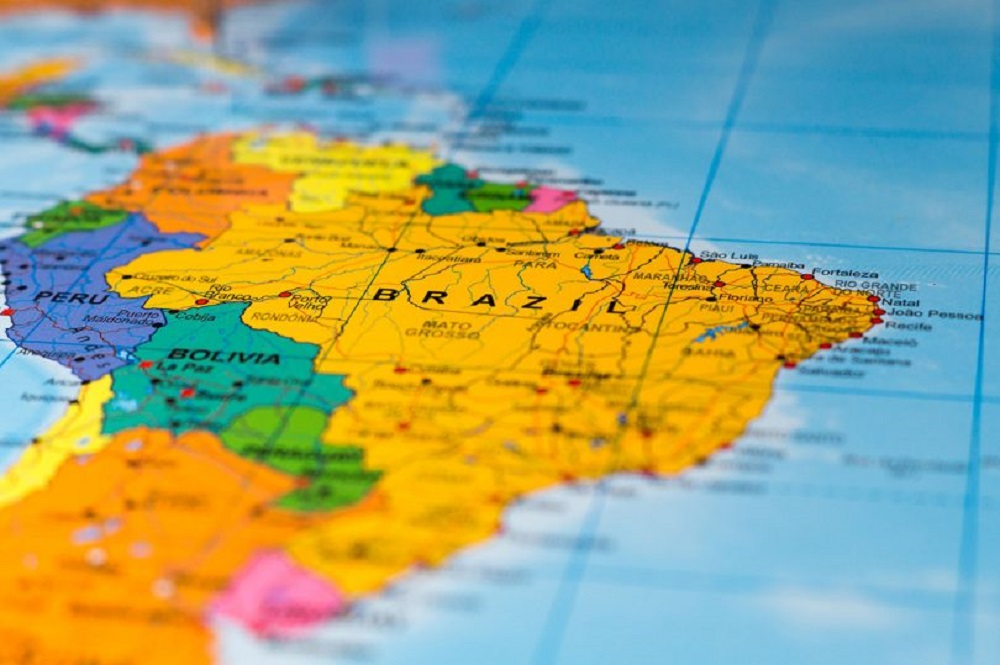RIO DE JANEIRO, BRAZIL – The three major Latin American business engines, responsible for almost two-thirds of the region’s GDP (Gross Domestic Product), are at a standstill.
Far from Jair Bolsonaro’s triumphalist rhetoric during his campaign, Brazil will barely keep its head above water and grow 0.8 percent in 2020; Mexico will recover a timid 0.2 percent and continue its reckless flirtation with recession; and Argentina, entangled in its umpteenth crisis, will see GDP shrink three percent this year.

All of these countries have managed to worsen their economic prospects since the middle of last year.
The weak performance of the three governments is – arithmetically – dragging down with them a region that is not going through its brightest years: according to the latest forecasts from ECLAC, the United Nations’ development wing in the subcontinent, growth should be slightly above zero percent, the threshold between expansion and recessionary terrain.
A 0.1 percent in Latin America is far, far away from the three percent global growth that the International Monetary Fund (IMF) is projecting for this year.
The deceleration of the great regional powers is only partially compensated by two large economies – Colombia and Peru – that will maintain their vigor this year and next, with GDP growth of around three percent.
Nor will the prowess of a group of medium or small countries that aggravate the already usual regional disparity, but do not enjoy sufficient force to reverse the Latin American trend of stagnation: the Dominican Republic (five percent in 2019), Panama (3.7 percent) and Bolivia (which with all the reservations that must be placed on a country in full political disruption, should grow 3.5 percent this year).
With the trio of leaders out of the game and Venezuela -although still the seventh regional economy- plunged into an unprecedented crisis, the thrust of the remainder is in vain: it reflects only the already classic idea of a subcontinent of many differing speeds.
“And in 2020, with less global dynamism, things could get even more complicated,” says Juan Carlos Moreno Brid, of the National Autonomous University of Mexico.
External factors explain some of Latin America’s ills.
Four factors are, according to the World Bank: the rate of expansion of the G7 (the group of the seven largest powers on the planet); China’s growth; the prices of raw materials; and the global cost of capital.
Three of these four variables are far from being at their best: only one of the seven most industrialized countries on the planet – the US – will grow above two percent this year; Chinese GDP has continued its trend toward a soft landing, up to about six percent annually; and, despite a good 2018, commodity prices remain far from the levels of a decade ago, when it allowed the Latin American region to escape the clutches of the Great Recession.
Only the cost of financing on a global scale, with very low interest rates, is good news for the region.
Monetary policy as the only answer
In the midst of a slowdown, Latin economies are not keeping pace with stalled international trade, due to open confrontation between the two largest Latin American commercial partners – Washington and Beijing – which will leave the increase in trade in 2019 just above one percent, compared to over 2.5 percent projected last spring.
“Chinese demand is essential for regional growth, and the trade war has caused a slowdown in the volume of their purchases in Latin America,” said Felipe Camargo, of Oxford Economics.

The virulent political tensions in several Pacific Basin countries, which threaten to further weaken the bloc’s growth capacity, are also bad news. Or investment: without it, there is no growth, and the strip of land from Ciudad Juárez to Ushuaia is suffering the consequences of this ruthless dictum.
Despite increasing year after year, between 1990 and 2017 the rate of investment in the region was around 20 percent of GDP, four percentage points less than in Eastern Europe – despite the recent independence of many of these countries in the 1990s – and 16 percent less than in emerging Asia, according to data from the Inter-American Development Bank (IDB).
The scarcity of investment adds to the narrow fiscal breathing space in most countries, which rating agencies strive to remind them of, year after year.
At least the inflation truce has allowed Central Banks to rise as the last barrier against the inexorable loss of economic life: three of the five major regional powers have reduced the price of money this year, with the only exceptions being Argentina -pressed by rising prices and the depreciation of the peso – and Colombia.
In Brazil, the price of money fell from 6.5 to 5.0 percent in less than half a year; in Mexico, from 8.25 to 7.75 percent; and in Chile, from 3.0 to 1.75 percent. The effects on growth should begin to be noted in late 2019 or 2020.
Faced with the risk of a second lost decade
Lost decade. These two words have continued to resound for 30 years in the economic power centers of Latin America, particularly among those who experienced the rigors of the 1980s, when economic growth was insufficient to cover the demographic increase.
Now, without the excessive optimism of almost ten years ago, one question comes back with force: is the region approaching a second lost decade?
“Yes, and the worst thing is that proper foundations for a much better future are not being laid,” says Ramón Casilda, of the University Institute for Research in Latin American Studies (IELAT) and author of ‘Latin America 2019: Current Situation and Economic Perspectives’.
“If we are talking about a gap in per capita income compared to developed countries or countries with social progress,” concludes Moreno Brid, “there is no doubt that we must talk about another decade lost since the end of the raw materials boom”.
In the current era, in which today’s tyranny imposes its law, it is all the more necessary than ever to exercise a historical perspective. Latin American stagnation, far from being new, comes from long ago: since the middle of the last century, according to Angus Maddison’s figures in his Maddison Project.

Not even in the period between 1973 and 2010 – which still includes much of the raw materials boom between 2002 and 2011 – has the annual growth in per capita income (1.1 percent) come close to the European (1.7 percent) or global (1.8 percent) average. The evolution was bad, but things were not much better before.
“In 1900, per capita GDP in Latin America was a quarter of that of the US,” recalls Michael Reid in ‘Forgotten Continent: The Battle for Latin America’s Sou (Campus/Elsevier, 2008)’. “A century later, it still is.”
Source: El Pais

